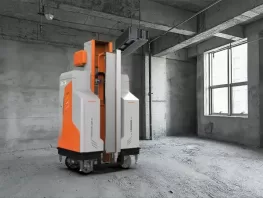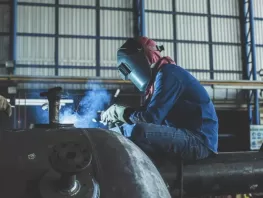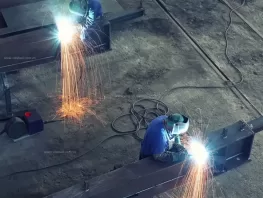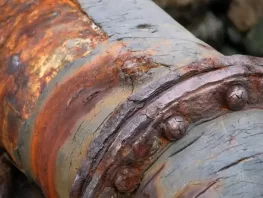
Repairing Your Industrial Floors When There is Cracking
Posted Jul 24, 2023 by Dave Scaturro

Over time, it's inevitable for concrete floors to develop cracks. Factors such as curing, settling, and routine activities can contribute to the formation and worsening of cracks. Moisture seepage, exposure to oils or chemicals, inadequate cleaning, and vehicles driving over cracked surfaces can all aggravate the condition of concrete floors. When faced with cracked floors, it's important to understand what you should and shouldn't do to address the issue.
Differentiating Cracks from Joints
Firstly, distinguish between cracks and joints in concrete floors. Cracks occur naturally due to curing, aging, abuse, and sometimes underlying substrate problems. Joints, on the other hand, are intentionally created to control cracking or isolate slab movement during the initial pour of the concrete floor.
Repairing Cracked Concrete Floors
One simple solution for cracked concrete floors is the use of control joints during the initial pour. Control joints help guide cracks to form along straight lines. Additionally, there are other repair options available, including caulks and specialized fillers. These fillers can vary in rigidity and flexibility, allowing them to expand, contract, and fill voids accordingly. The choice of filler depends on the nature of the cracks and the type of activity the floor will endure.
Facilities dealing with corrosive chemicals or recurring cracking often require specialized fillers, while high-traffic areas may only need a filler to restore strength and even out the surface.
In some cases, deep repairs may be necessary to address severe cracks and broken joints. Surface fixes may not be sufficient, as these damages can worsen over time if not properly addressed.
Methods to Avoid When Repairing Cracked Concrete Floors
One common misconception is that simply applying an epoxy coating can cover and fix cracks in a concrete floor. However, the effectiveness of this method depends on the condition of the crack and the conditions it is or will be exposed to, as mentioned earlier. Merely coating over the cracks with epoxy may not provide a long-lasting solution and can lead to the coating seeping through the crack before drying, failing to resolve the underlying issue.
Another approach to avoid is using standard over-the-counter caulk for repairing cracked concrete. Specialty caulks used in the industry are not typically found in regular retail stores.
Seek Professional Assistance
It's advisable not to attempt repairing your concrete floor on your own. Contact Alpine Flooring for a consultation. Our experienced team will assess your concrete floor and provide expert recommendations for the next steps. We are here to assist you in addressing cracked concrete floors effectively and ensuring a durable and long-lasting solution.









